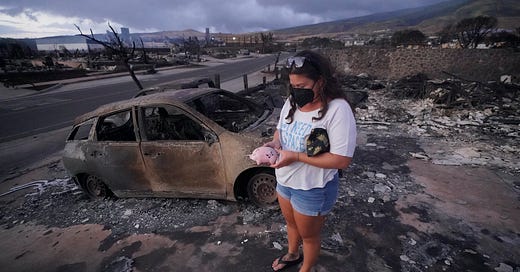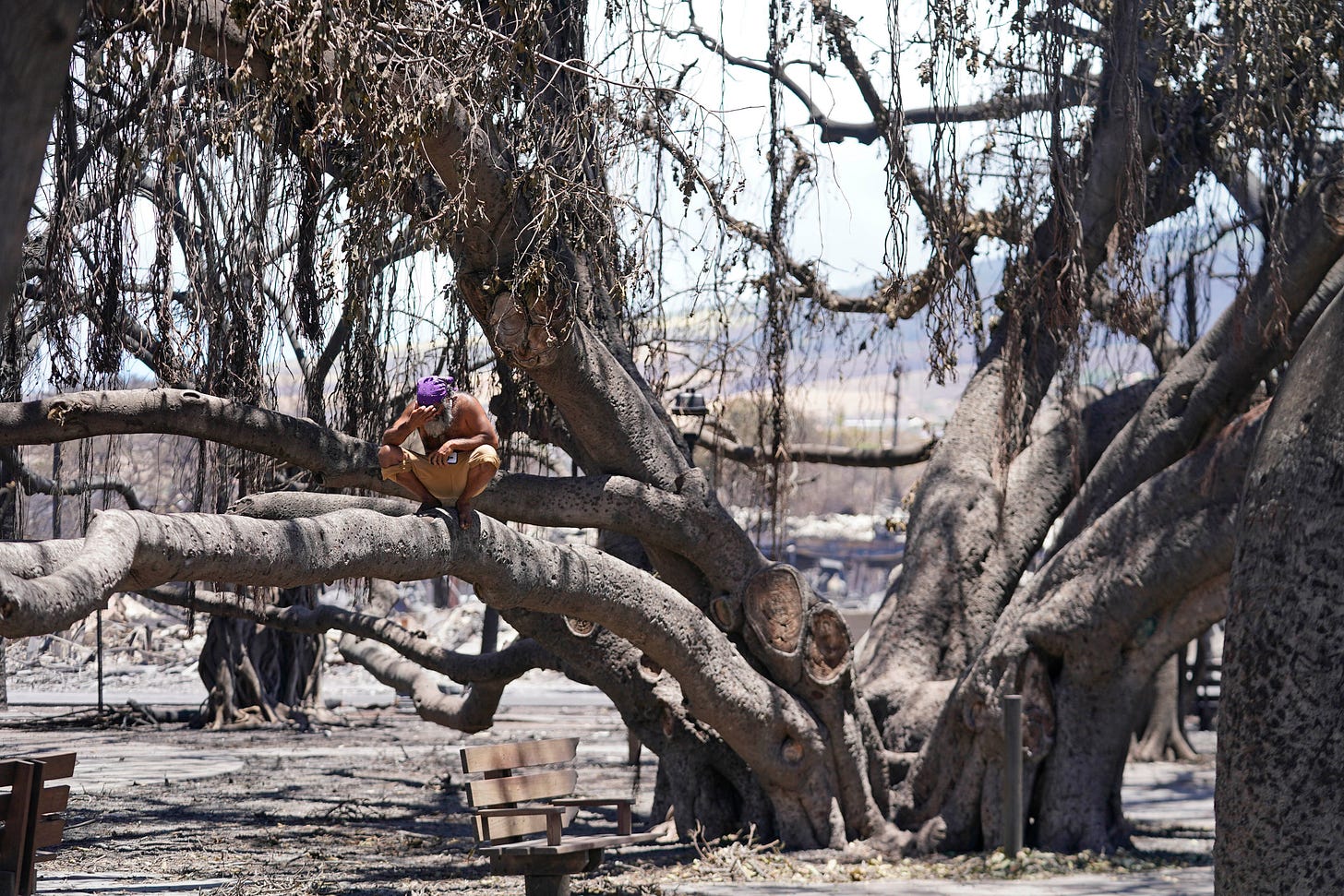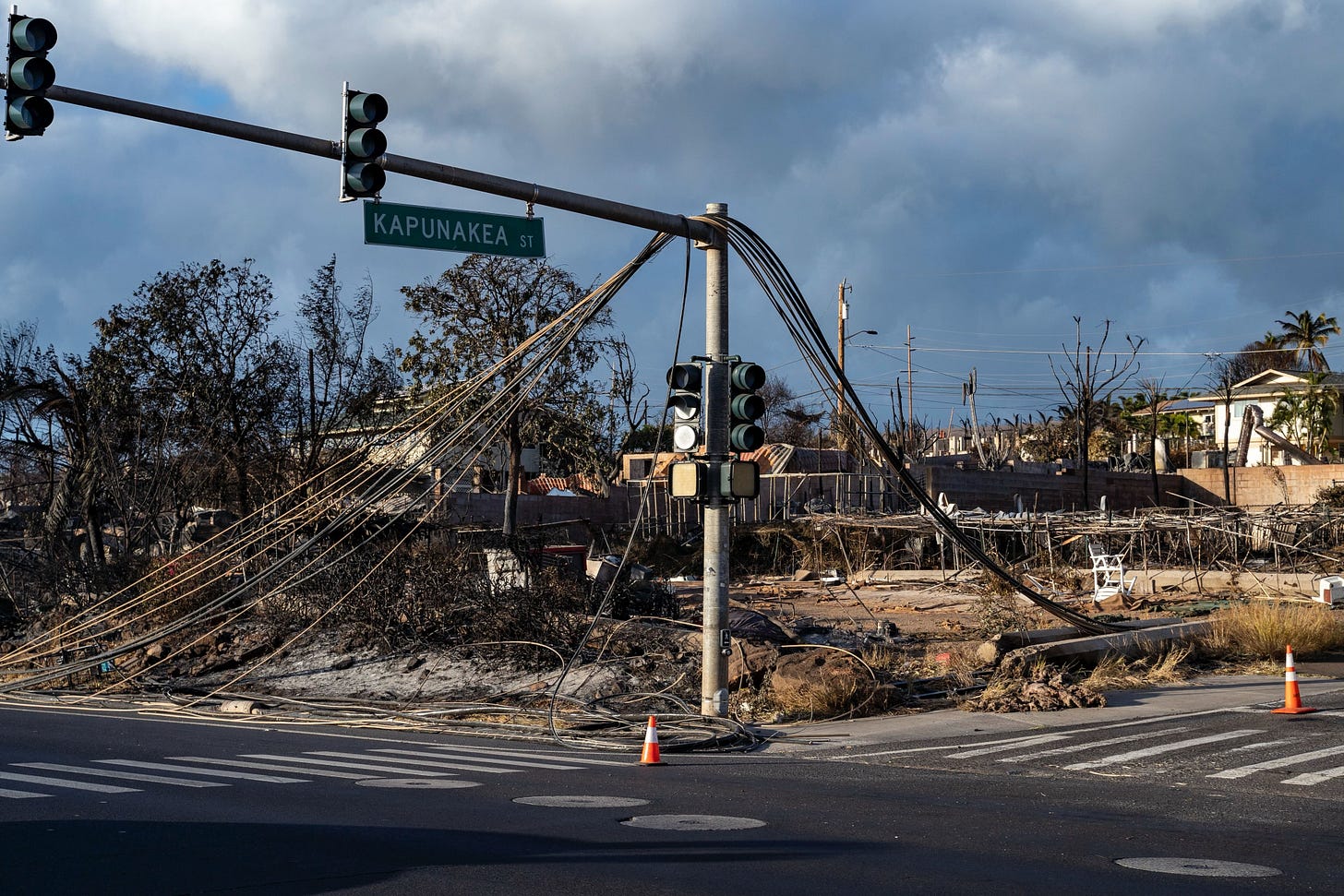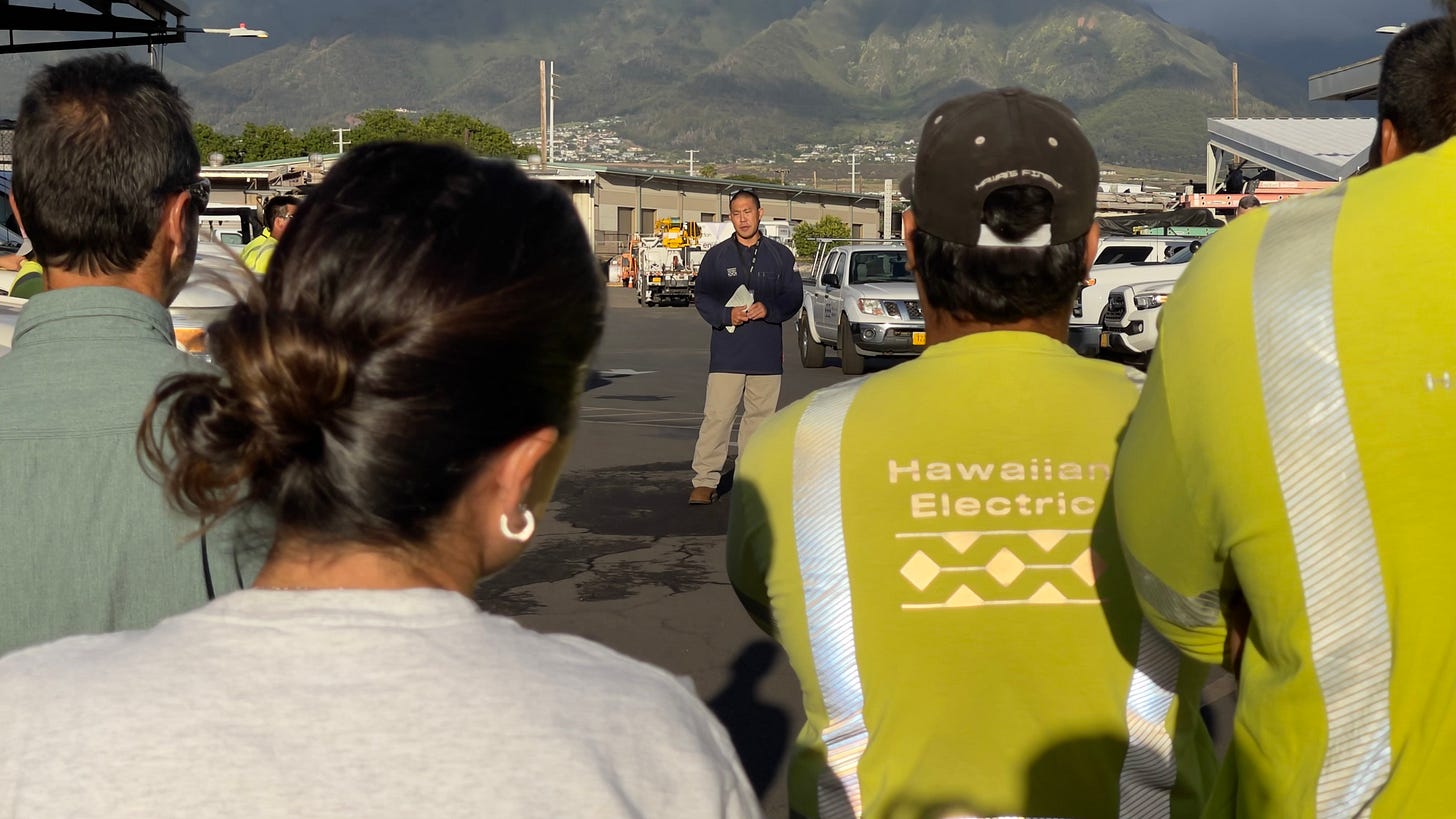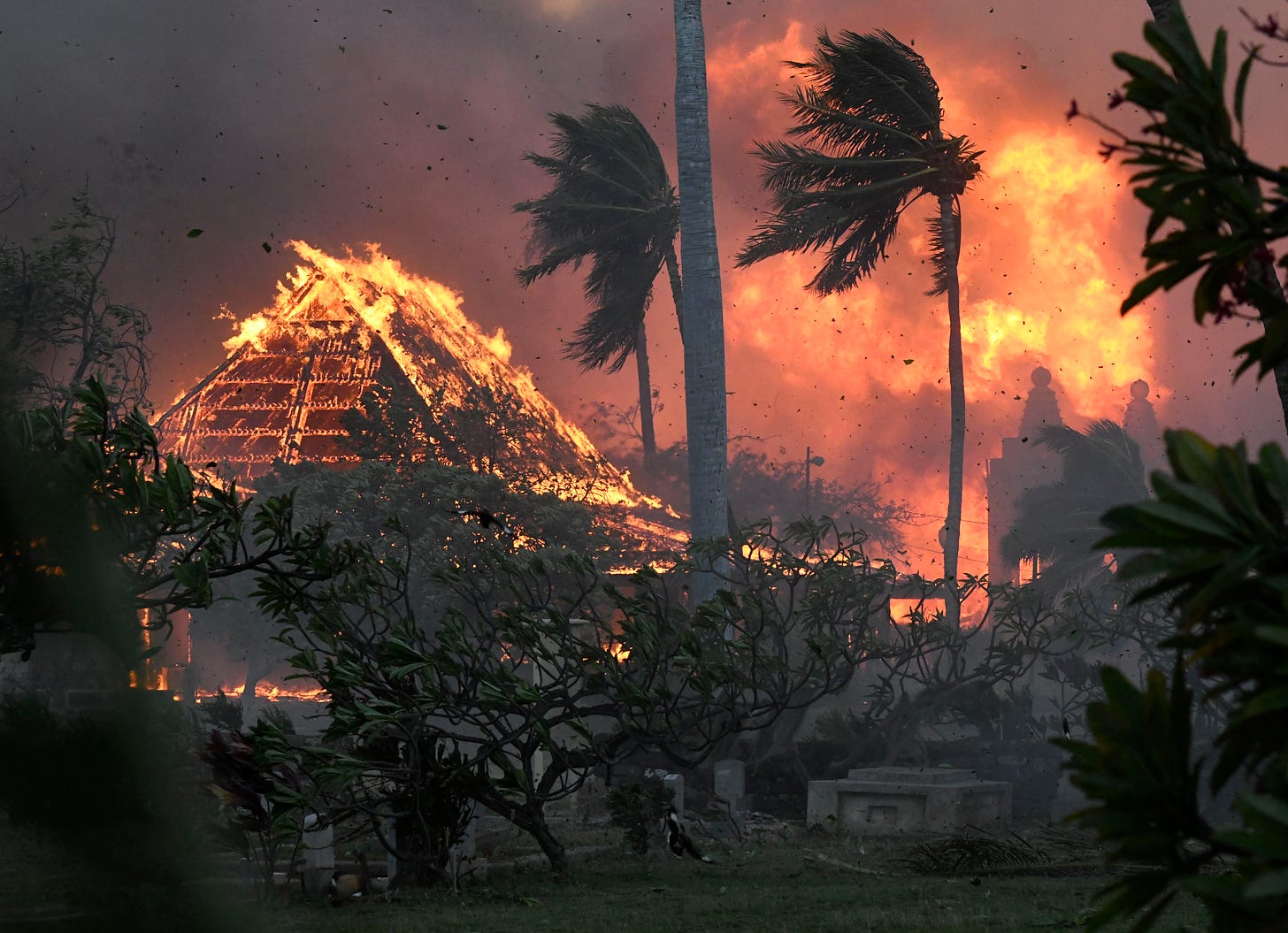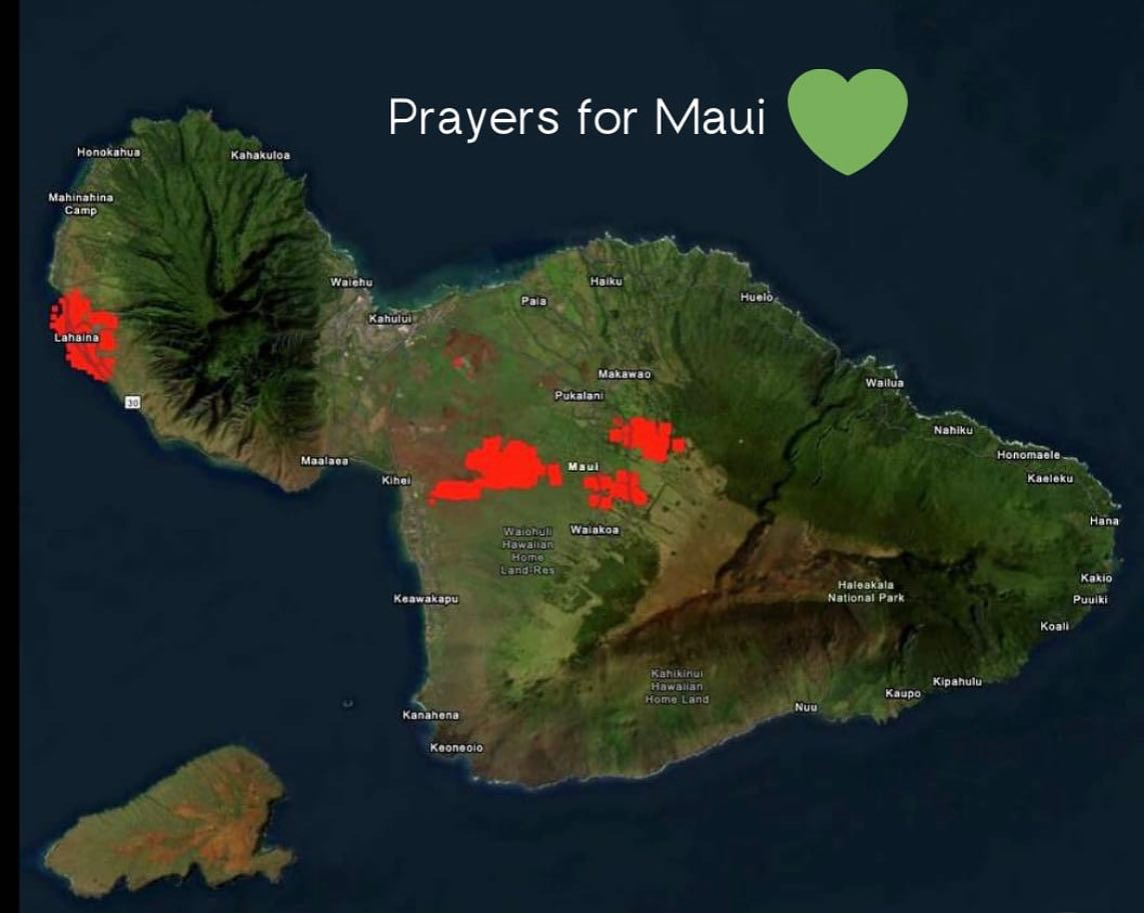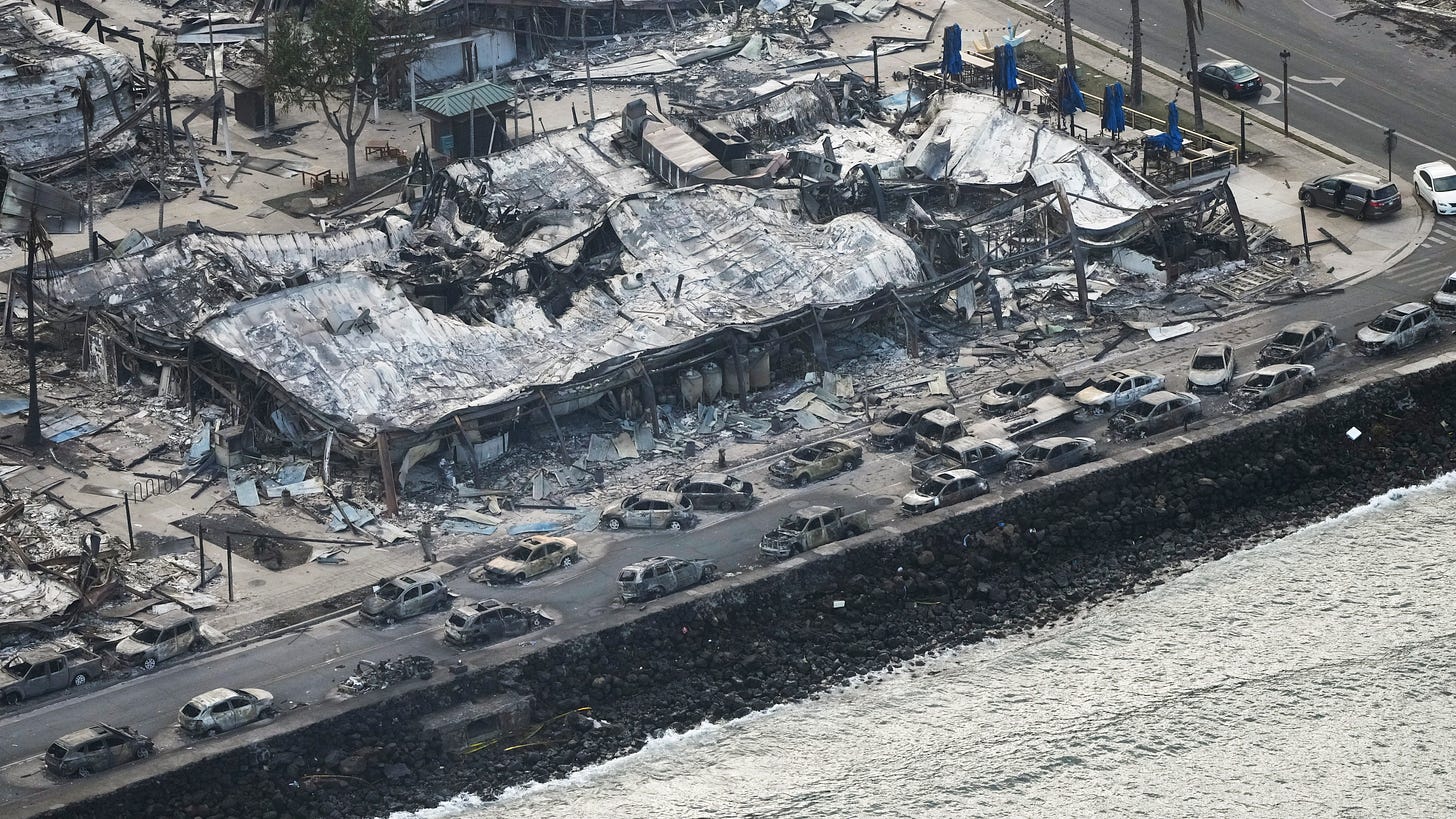"Like a bomb dropped on Lahaina" ~ Hawai'i Governor
Historic Lahaina town torched by apocalyptic firestorm: Hawai'i responds ❤
“What was left was just cement & white ashes. I’ve never seen anything like that in my life.”
Jason Momoa :
Although seen as Maui’s Waikīkī, Lāhaina has rich cultural significance stemming back all the way to traditional times. Strong winds from Hurricane Dora caused wildfires which spread excessively swift basically leveling the town of Lāhaina. It looks like a bomb was dropped right on the town. I can’t believe this happened and I’m praying that everyone that’s unaccounted for gets reunited with their ʻohana. This is probably the worst disaster that I’ve lived through so far. As we honor the memories of Lāhaina’s past, let us rebuild and restore this historic town. Maui no ka ‘oi 🙏🏾🤙🏾
#lahaina #maui #hawaii #hawaiian #lahainafire #lahainaluna
Jason Momoa:
Mahalo to everyone who has donated and shown aloha to the community in this time of need.
Please check our Instagram Stories for updates and
follow @kakoo_haleakala @mauirapidresponse and @hawaiinewsnow for more!
‘Āina Momona is standing up this fundraiser to support our Maui community. All the funds raised will be given to the Hawaii Community Foundation Maui County Strong Fund https://www.hawaiicommunityfoundation.org/maui-strong to support disaster relief on Maui.
We are using this ActBlue platform because giving is quick and easy, and the funds come to us immediately, allowing us to get these funds to families in need faster. An accounting of all the monies raised through this fundraiser and our distribution to HCF will be posted to our website.
Mahalo for your support.
#mauihawaii #wildfires #mauilife #mauinokaoi #ainamomona #aina #maui
"Every time I close my eyes I see Armageddon”
Oprah Winfrey has joined in handing out emergency supplies to citizens of the Hawaiian island of Maui.
At an emergency centre set up within the war memorial stadium in Maui’s capital, Winfrey joined in efforts to support those left homeless by the fires that have sprung up in several areas, including the historic town of Lahaina which has been devastated with landmarks burnt to the ground.
Celebrity talk show host Oprah Winfrey was spotted at the War Memorial Gymnasium on Maui, which has been set up as an emergency shelter for families impacted by the devastating Maui wildfires.
Winfrey is a longtime resident of Maui where fires have so far claimed the lives of 80 people.
Winfrey has been living on Maui part-time for over 15 years and owns more than 2,000 acres on the island. She owns three different properties on the island, which are located in Kula, Hana and nearby Haleakala.
There are six shelters in operation on Maui for those displaced, and officials said they were drafting a plan to house them in hotels and tourist rental properties.
In recent days, donations have been rolling in.
The island is home to many wealthy people, including Amazon founder Jeff Bezos. He and his partner Lauren Sanchez have pledged $100m (£79m) to help the fire victims.
Wildfires on Hawaii's Maui island and Big Island began on Tuesday night. The cause is still not known but once lit, hurricane winds and dry weather helped fuel the flames.
Authorities have warned it will take many years to repair the damage caused by wildfires on the island of Maui. More than 1,000 buildings have been destroyed in Lahaina alone.
The extensive damage is an added stress for Maui's locals, many of whom rely on the service jobs supplied by the tourism industry.
Governor Josh Green warned Hawaiians on Friday what they found in Lahaina would be difficult.
"Lahaina is a devastated zone. They will see destruction like they've not ever seen in their lives," said the governor, who visited the town on Thursday. "Be very safe, be very careful."
Hawaii utility faces scrutiny for not cutting power to reduce fire risks
Before the Maui wildfires, Hawaiian Electric did not have a plan to shut off power in advance of dangerous winds
KIHEI, Hawaii — Four days before fast-moving brush fires engulfed parts of Maui, weather forecasters warned authorities that powerful wind gusts would trigger dangerous fire conditions across much of the island and Hawaii.
The state’s electric utility responded with some preemptive steps but did not use what is widely regarded as the most aggressive but effective safety measure: shutting down the power.
Hawaiian Electric, the utility that oversees Maui Electric and provides service to 95 percent of the state’s residents, did not deploy what’s known as a “public power shutoff plan,” which involves intentionally cutting off electricity to areas where big wind events could spark fires. A number of states including California have increasingly adopted this safety strategy after what were then the nation’s most destructive and deadliest fires, in 2017 and 2018.
Hawaiian Electric was aware that a power shut-off was an effective strategy, documents show, but had not adopted it as part of its fire mitigation plans, according to the company and two former power and energy officials interviewed by The Washington Post. Nor, in the face of predicted dangerous winds, did it act on its own, utility officials said, fearing uncertain consequences.
The decision to avoid shutting off power is reflective of the utility’s struggles to bolster its aging and vulnerable infrastructure against wildfires, said Jennifer Potter, who lives in Lahaina and was a member of the Hawaii Public Utilities Commission until just nine months ago.
“They were not as proactive as they should have been,” Potter said about Hawaiian Electric’s fire-prevention planning, adding that there had not been any real meaningful action to “address some of those inadequacies in terms of wildfire.”
Doug McLeod, a former energy commissioner for Maui County, also said the utility was aware of the need for a regular shut-down system and to bury lines, especially given the “number of close calls in the past.”
Earlier this week, high winds caused widespread damage to utility infrastructure. Photos and videos show power lines snapped in trees and swinging in the air. The intense gusts knocked down about 30 utility poles across the region, many onto trees and roads, complicating evacuations, according to Maui County Mayor Richard Bissen. He confirmed that some lines on the poles were energized when they hit the ground.
The cause of the Maui blazes — now the second-deadliest wildfire outbreak in modern U.S. history, with 80 people confirmed dead — remains under investigation. That probe may take weeks or even months to produce official findings, and on Friday, Hawaii Attorney General Anne Lopez (D) announced a “comprehensive review” of the decisions and policies surrounding the fires.
In the meantime, Hawaiian Electric is rejecting suggestions that it could have done more to protect public safety.
In a statement, the utility said it has a “robust wildfire mitigation and grid resiliency program” that includes managing vegetation, hardening its power systems and inspecting its infrastructure. It also said it followed protocols, including “not enabling the automatic reclosure of circuits that may open during a weather event.”
Such a procedure prevents a line from continuing to shower sparks after it has fallen, but does not prevent the initial spark, said Michael Wara, a wildfire expert who directs the Climate and Energy Policy Program at Stanford University. That’s the intent of a “public power shutoff plan,” a strategy with serious trade-offs.
Shutting down power is an agonizing decision for utility executives, since it disrupts lives and generates political blowback, especially if the anticipated wind event does not trigger fires. But as climate change intensifies extreme weather, shutting down power can prove to be a critical option for a utility to prevent destructive and deadly wildfires.
In California, Oregon, Nevada and other states, downed power lines, sparks from transmission hubs and other electrical-grid failures have started or helped to spread some of the deadliest and most destructive blazes in U.S. history. That has prompted utilities in these states, with approval from regulators, to proactively shut down power to communities when red-flag conditions arise.
Hawaiian Electric recognized that a power shut-off plan could be effective, especially after it reviewed what happened with California’s 2018 Camp Fire, which killed 85 people, documents show. In a filing to the state last year, it pointed to California’s Public Power Shutoff Plan as a successful way to prevent wildfires when additional robust techniques are not yet in place.
In its statement, however, Hawaiian Electric raised concerns that shutting off power might prevent fire crews from using electricity to draw water they needed for firefighting.
A utility spokesperson explained that it is difficult to enact “preemptive, short-notice power shutoffs” because they must be coordinated with first responders and that “notifications also need to be made to customers with special medical needs who use specialized equipment.”
Such challenges are a real concern, wildfire experts note, but they add that the purpose of a power shut-off plan is to ensure that advance arrangements are made with all parties affected. That includes emergency responders who, with enough time, can procure equipment such as backup generators to pump water if the grid goes down. Without such a plan, they said, such advance arrangements never will be in place.
In addition, Hawaii is powered by a grid that uses old wooden poles that are largely uninsulated and strung with lush vegetation over miles of rugged terrain, according to utility specialists. In interviews, residents and energy experts said they have long called for the utility to harden its grid, and despite the cost, to put more of it underground.
The poles have been in horrible shape for years, said Potter, the former utilities commissioner. “I think we were all playing on the fact that we got lucky — up until now,” she said.
Wara and other experts point out that before the Maui wildfires, there were no lightning strikes, a frequent cause of random fires in other parts of the United States. Instead, the pattern of Hawaii’s fires suggests that a spate of small ignitions combined to form a bigger blaze, Wara said, and “the only real source of that is power lines.”
The chronology of how and where the fires started, and when and where power equipment had problems, has alarmed many residents and officials.
https://www.washingtonpost.com/climate-environment/2023/08/12/maui-fire-electric-utility/
Historic Waiola Church engulfed in inferno
Folks barely escape burning inferno, others had to jump into sea
Kākoʻo Maui: Hawaiian Way Fund
If you are able to donate, we will double it.
CNHA is partnering with Native Hawaiian and community organizations and businesses to match up to $1.5 Million in donations for ʻohana impacted by the devastating wildfires on Maui.
https://www.memberplanet.com/campaign/cnhamembers/kakoomaui
‘Āina Momona is standing up this fundraiser to support our Maui community. All the funds raised will be given to the Hawaii Community Foundation Maui County Strong Fund https://www.hawaiicommunityfoundation.org/maui-strong to support disaster relief on Maui.
Important safety/hazard warning for long-term exposure:
After Maui fires, human health risks linger in the air, water and even surviving buildings
People returning to what remains of the beachside town of Lahaina, Hawaii, and other Maui communities after one of the nation’s deadliest wildfire disasters face more dangers, beyond the 2,200 buildings destroyed or damaged and dozens of lives lost. The fires also left lingering health risks for humans and wildlife.
When fires spread through communities, as we’ve seen more often in recent years, they burn structures that contain treated wood, plastics, paints and hazardous household wastes. They can burn vehicles and melt plastic water pipes. All of these items release toxic gases and particles.
Many airborne pollutants fall to the ground, and when debris or dust is stirred up, hazardous particles can enter the air, where people can easily breathe them in.
Read details: https://theconversation.com/after-maui-fires-human-health-risks-linger-in-the-air-water-and-even-surviving-buildings-211404

